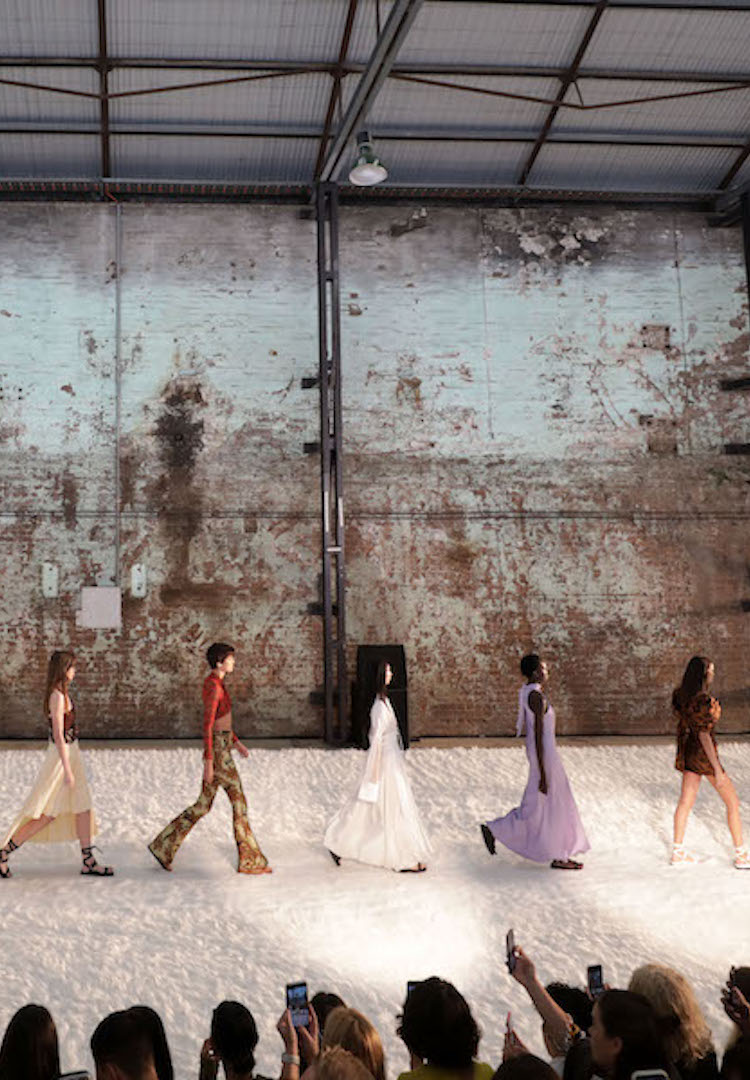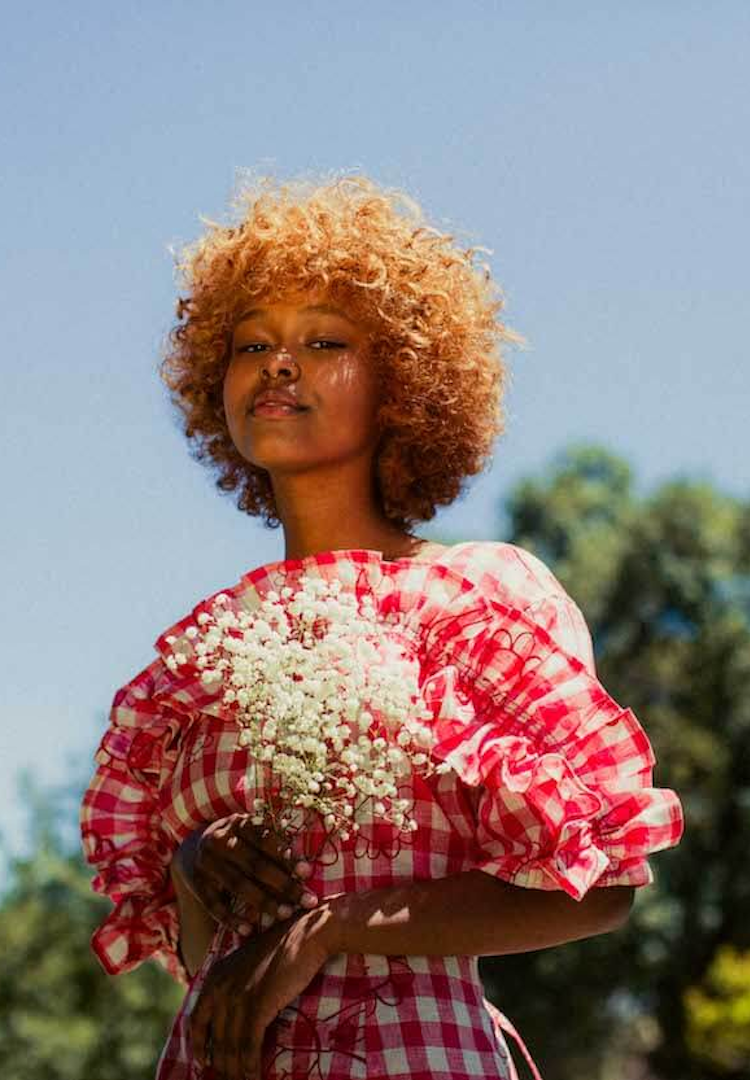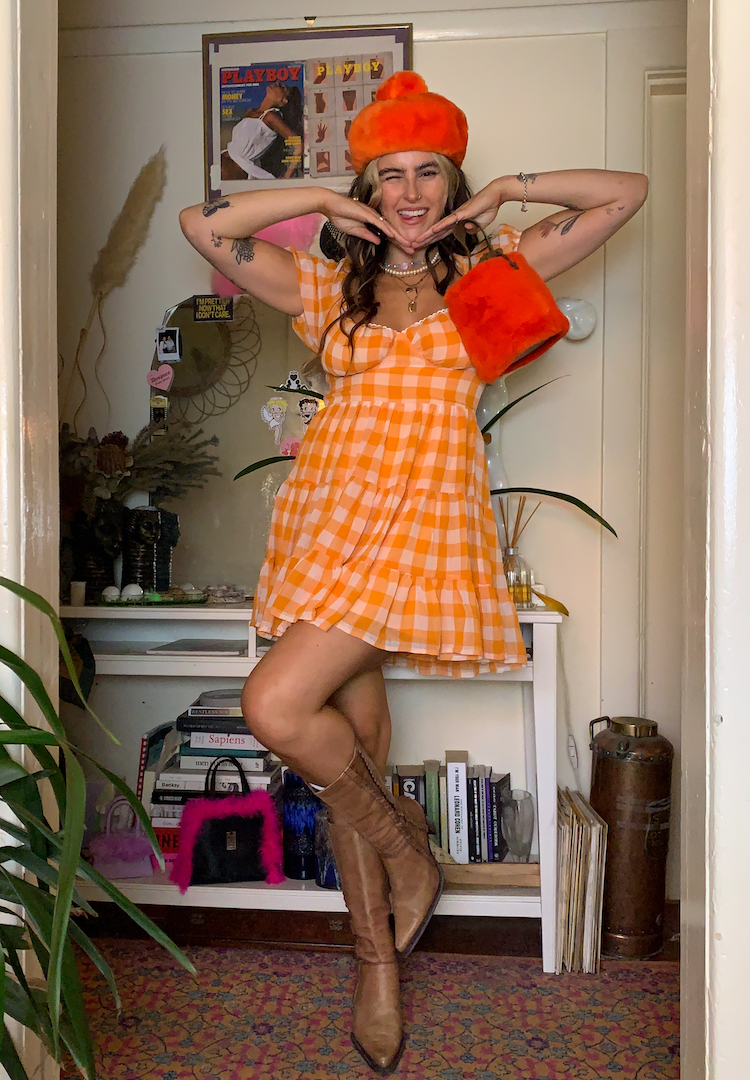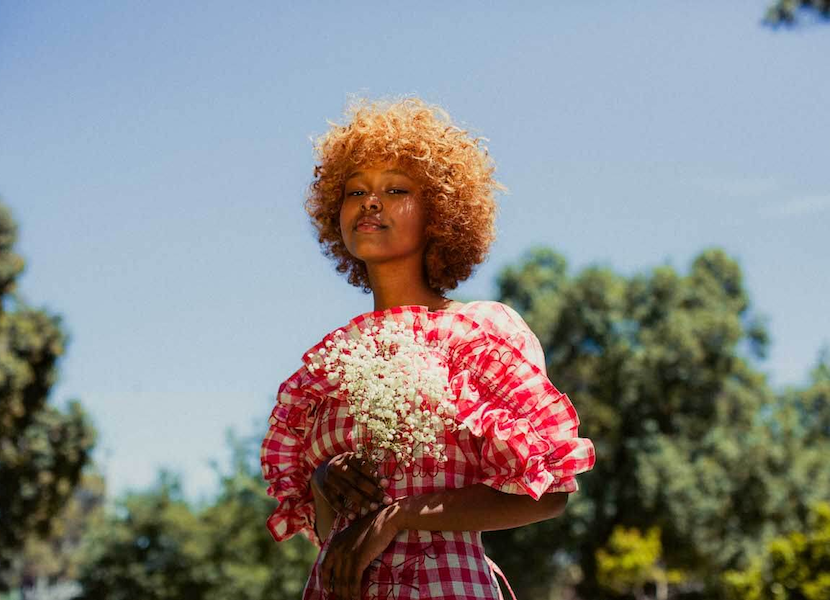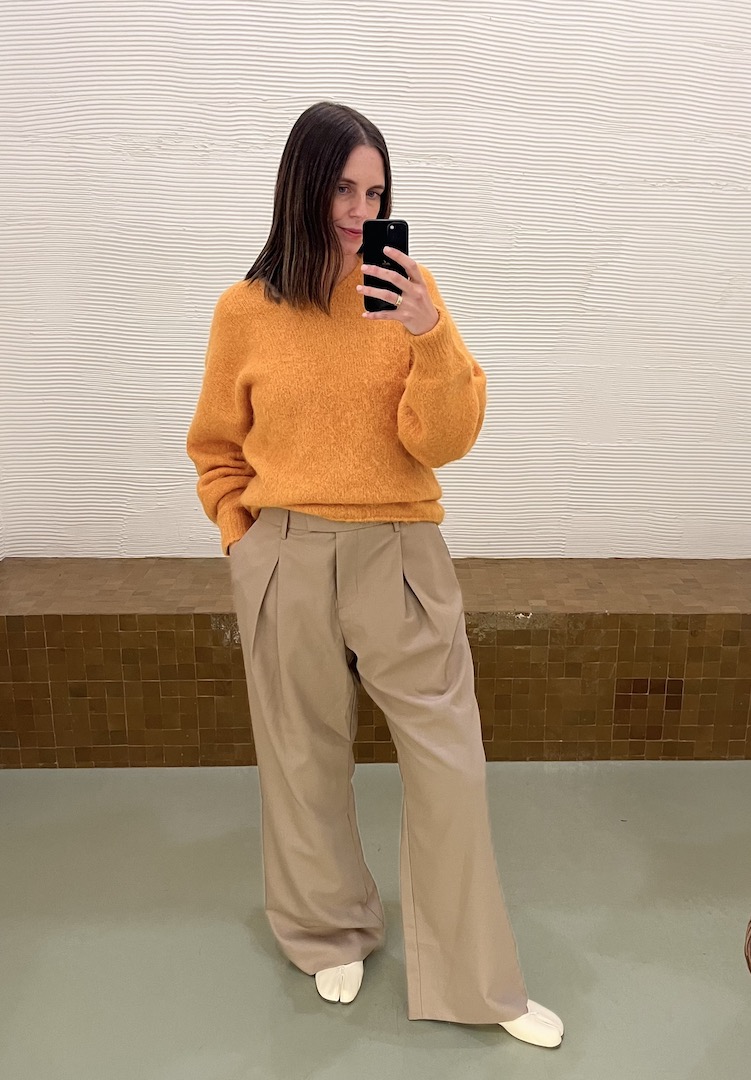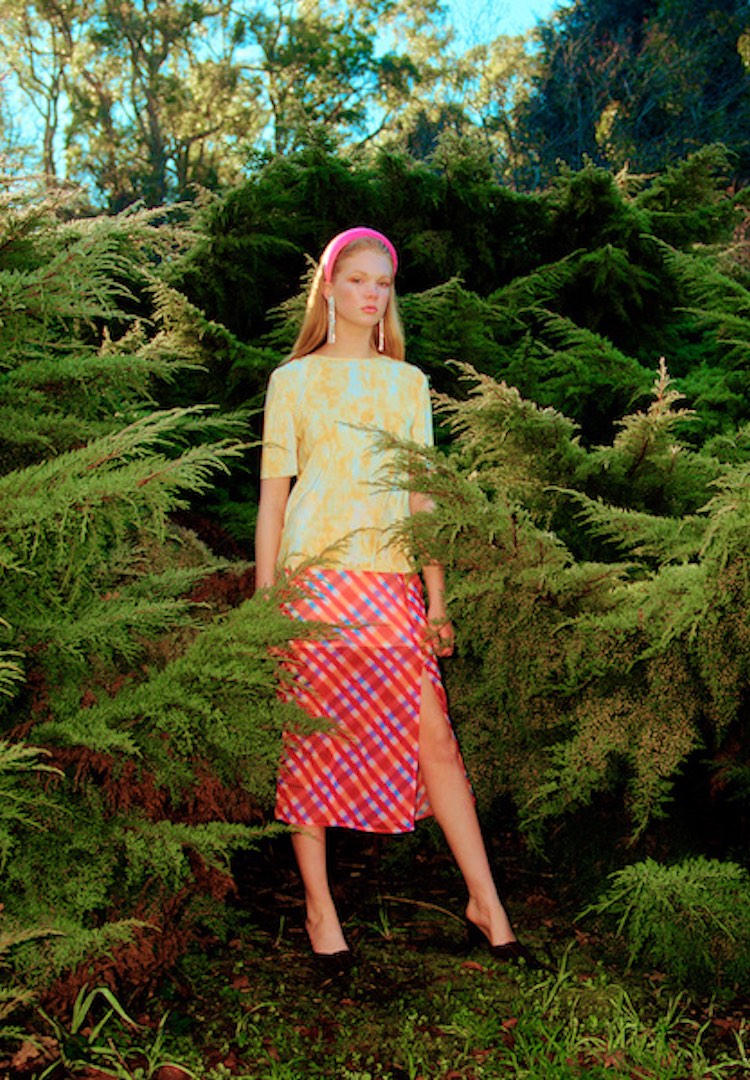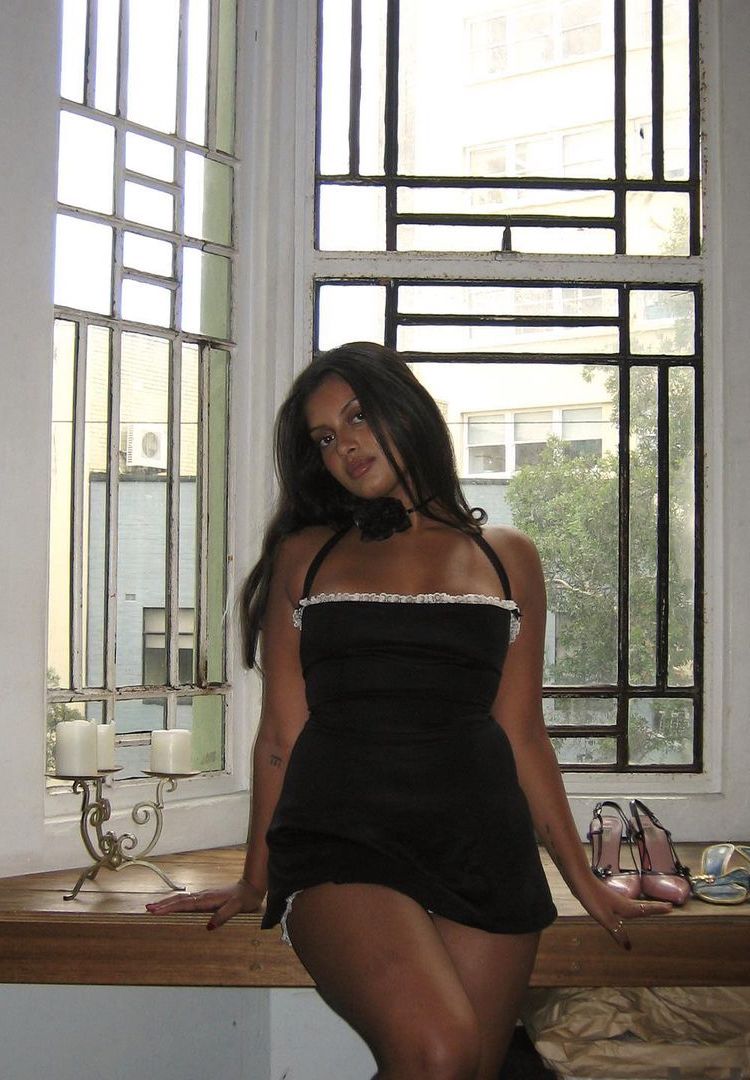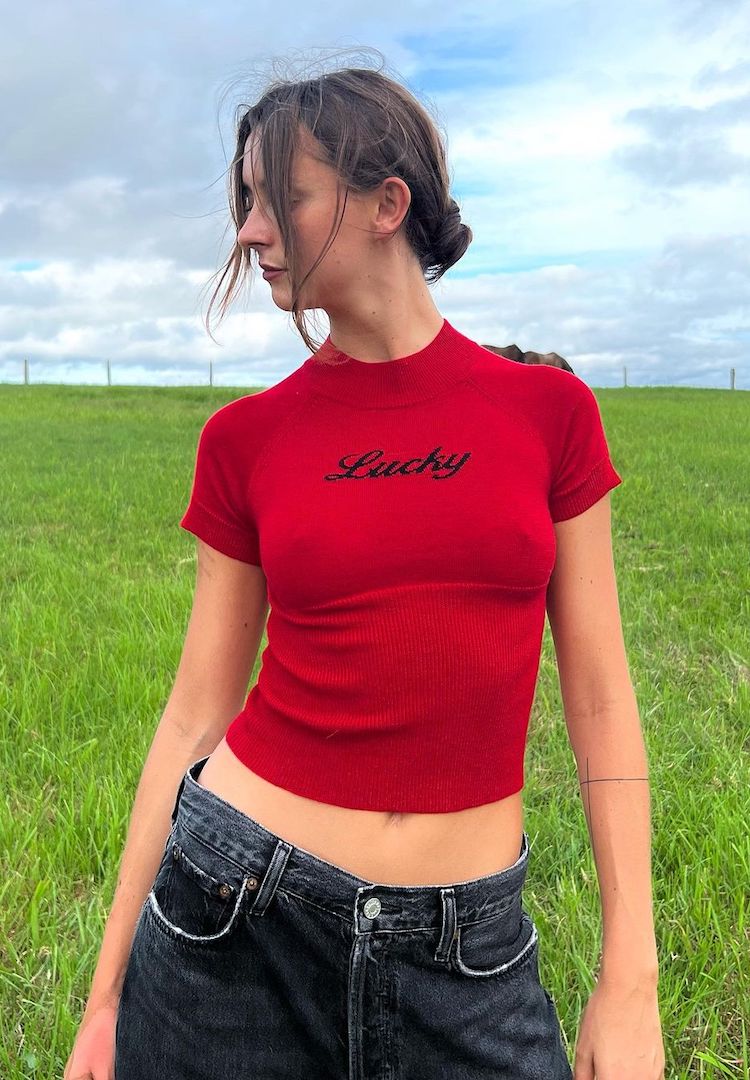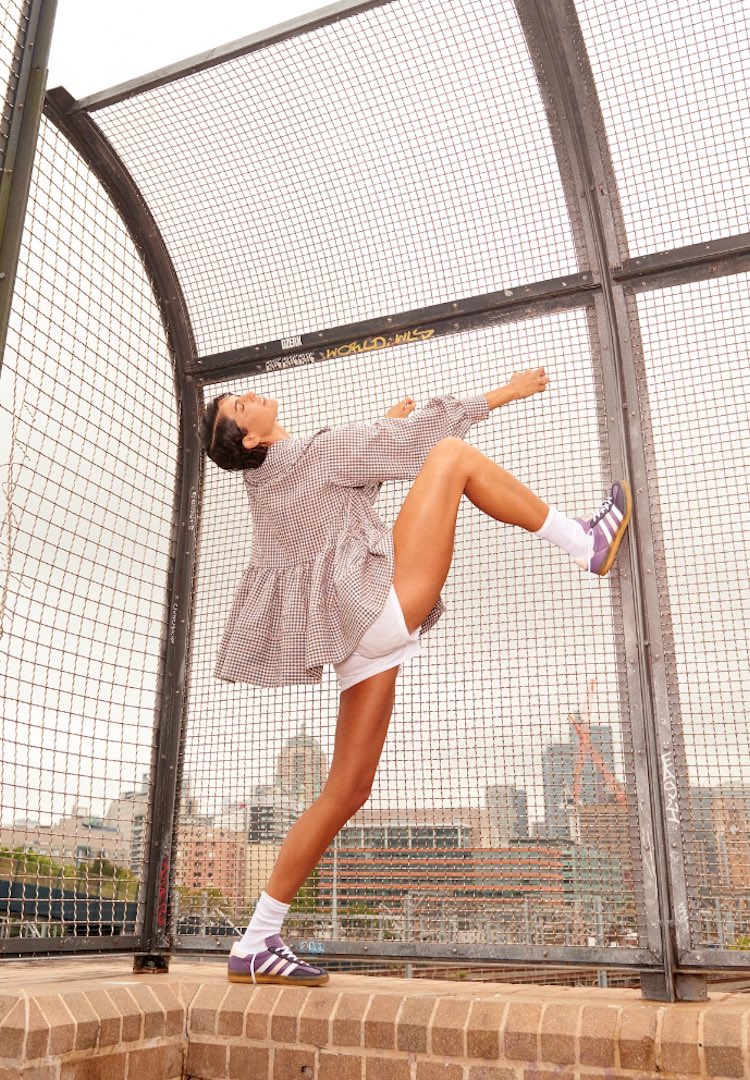7 Australian brands share their (imperfect) journey towards truly sustainable fashion
IMAGE VIA SQUINT CLOTHING
WORDS BY MAGGIE ZHOU
“You have to be ok with saying ‘you’re right, I should be doing better’.”
With Fashion Revolution Week and Earth Day filling up this week’s calendar, sustainability is at the forefront of many of our minds. But climate fatigue (you know, that collective exhaustion from feeling powerless against our climate crisis) is real and in the face of eye-roll-worthy efforts of greenwashing, it’s easy to become disenchanted with the industry’s movement to change.
Learn more about sustainability in our Fashion column.
We’re not losing hope over here at Fashion Journal. While some brands seem to push sustainability for optics’ sake, there are still many Australian fashion brands making genuine waves in the sustainability world. Brands that have a no-bullshit approach to transparency, that know they’re imperfect and that there’s a long way to go. Having honest conversations is how we begin to heal our fashion, beauty and jewellery industries, so we invited a handful of brands to start the dialogue.
Marnie Goding, Elk Co-Founder
View this post on Instagram
We are an established fashion business with traditional processes, suppliers and practices in a state of change. Publishing an annual transparency report gives us the platform to explain how we operate and detail the journey we are on. We acknowledge the impact we have on communities and the environments we work in, and through this understanding, our team is motivated to work collectively on reducing our impact.
At Elk, we are focused on making every part of the business better. The reports are an honest view of our progress. We are careful to give clear, concise information avoiding confusing or misleading material only publishing accurate data and well-researched facts.
Shifting to greener energy generation and consumption, eliminating or replacing superfluous and high-impact materials such as packaging and trims, as well as reducing our carbon footprint are major elements of the transition. We are constantly pushing to produce and use better fibres, and are designing processes to take responsibility for the products we make at every stage of their life cycle.
Customers need access to information to make informed purchasing decisions and we have taken the position that it’s not enough to just label something as green, because the complexity of making ethical and environmentally sensitive product is insanely complicated. So, we publish our progress, our challenges and our goals – this is us, this is what we do, what, where and how we make.
Ema Hewitt, Hew Clothing director and designer
View this post on Instagram
As the owner and designer of Hew, I am looking for ways to reduce my waste and am taking steps to move towards circular design. Three years ago, I replaced all our linens with Global Organics Textile Standard certified linen and hemp. I requested our factories send all scrap material to our studio so we can repurpose it for new products such as scrunches and masks.
This year, we moved to 100 per cent biodegradable packaging for all factory-to-studio deliveries, which has been a goal for some time. I am still in the process of upgrading our threads to Tencel. Last month, I experimented with repurposing plastic bottle lids to make buttons by melting them down. It was a fun project but it needs further exploration.
Design is creative problem solving and sustainability is solving an urgent problem. I believe it’s our responsibility as makers to keep searching for ways to minimise our environmental impact and reduce waste in meaningful ways.
Gary Bigeni, Gary Bigeni founder and designer
View this post on Instagram
I started trying to make my brand more sustainable about six or seven years ago. I basically started by cutting out all the plastic and wire hangers, and cutting back on using any plastic in production or deliveries. By keeping my business small and by not having a physical store or shopfront, I can also reduce my impact on the environment.
Over the last few years, another element I thought could work really well for me was utilising more of my deadstock fabric instead of creating new fabrics. This also allowed for me to evolve my business into a pre-order and made-to-order model, allowing me to cut down on mass-producing collections. All the elements I use for my packaging are recyclable and biodegradable materials.
Creating my business on this platform has been amazing in terms of working one-on-one with customers, giving me a deeper understanding of who they are, what they want from my brand, and how I can deliver that to them in terms of colourways, specific silhouettes, shapes and lengths they prefer.
It has also been important as a business and for myself over the last 18 years to really understand what my customer is wanting and to really cut out all the bullshit elements that are unnecessary. I have also been able to create my own rules for my own brand, rather than following a traditional fashion calendar. You know, I kind of feel like that has been broken down a little bit, brands are now focused more on creating collections or capsules that are more suited to their customers, their seasons and the timings that work for them.
Brianne West, Ethique founder and CEO
View this post on Instagram
No plastic, no laminate, no chlorines. Our packaging goes to the very heart of what Ethique stands for. Our solid bars are designed to do away with water and with it, the plastic bottles. They’re entirely home compostable, right down to the home compostable cellulose tamper stickers on every box. Our plastic-free stance has helped us save 10 million plastic bottles from landfill so far, along with over 700ml of water for each one of those bottles (which is the amount it takes to manufacture plastic for one standard 350ml plastic bottle), plus the water that would normally make up approximately 65 per cent of those liquid shampoos. I’ll let you do the maths!
But just swapping out plastic for paper isn’t good enough – paper production can come with a raft of other environmental concerns too. For example, it can be a massively water-intensive process, using between 300 to 400kgs of water per kilo of paper. We considered this factor when designing our packaging, to make it as Earth-friendly as possible. Comparatively, our production uses just 10 to 25kg of water per kilo as it’s recirculated and recycled.
Manufacturing, distribution and retail are industries rife with plastic. It’s just how it’s always been, and challenging that is, well, challenging! We have seen retailers shrink wrap bars or stick plastic labels on them. We’ve had logistics facilities promise to ship plastic-free, only to fill boxes with bubble wrap and polystyrene.
What has worked for us has been getting our partners to understand why we require our products to be plastic-free in every way. Because when they get it, they then look to change the way they do business and expand their environmental actions beyond just our products. It’s an ongoing mission and will continue for a long time yet.
We are proudly climate-positive and we offset 120 per cent of our net carbon emissions. Our carbon footprint is measured every year by Ekos who run a robust, independent assessment process. We then work with various organisations, such as Ecologi, to offset this footprint. We also plant one tree or mangrove for every order placed on Ethique’s website. With the help of our customers, in one year alone, we have planted 202,000 trees and mangroves in the Ethique forest across the world.
Unfortunately, carbon offsetting is not a silver bullet to the climate crisis. Carbon offsetting – when done properly through gold standard accredited providers – is a useful tool to help combat climate change, but it is not a solution. We cannot plant enough trees, mangroves or even rainforests to keep up with the huge amounts of greenhouse gases we are pumping into the atmosphere through ‘business as usual’. That’s why we review our emissions every year and ensure we are continuously looking at parts of the business we can improve on.
Ellie Vallely, Squint Clothing founder and designer
View this post on Instagram
Sustainability is something I am constantly working on and learning about. I’ve never felt comfortable marketing Squint as an ‘ethical and sustainable’ brand. I think this comes from a fear of misrepresenting my brand and the rampant greenwashing within the fashion world. These can feel like buzzwords rather than real, tangible objectives.
As I am still a made-to-order brand, all made in-house, I have strict control over my manufacturing practices and minimise waste as much as I can. I love making products from offcuts and scraps, it is a challenge I relish. Each collection I design works with the next to help to curb trend-driven consumption. I source my fabrics from a mixture of new stock, true deadstock (damaged), excess manufacturer deadstock and thrifted fabrics, with a focus on natural fibres and lower-impact fabrics where possible. As a small business, it can be frustrating accessing places to buy more sustainable options as quite a lot of the industry is still super secretive and insular. This is one of the reasons I see this all as a process – the more I grow, the better decisions I can make and have access to.
As with the fashion world as a whole, the ‘sustainable’ fashion world has a fatphobia problem and for me, there is no sustainability without size inclusivity. Inclusivity is something to constantly be working towards, not just a marketing tag to flash on my Instagram. I’m passionate about including as many folks as I can in my sizing and currently offer up to a 6XL with custom sizing too.
Everything I have learnt about sustainability has been from working, making mistakes and listening to those who are more educated than I am who call out the bullshit. You have to be okay with saying ‘you’re right, I should be doing better’.
Jack MacKinnon and Isabella Toppi, Inside Voices founders
View this post on Instagram
Fashion is by no means a necessity, however, we see it as an important form of creative expression and individuality. This is why, for us, being sustainable with our brand is being able to create our art without leaving a huge impact on our environment.
At the core of our practice is the process of upcycling and the use of already existing materials. Since Inside Voices’ conception, we have sourced pre-owned garments via local charity shops as well as reaching out to companies who are looking for ways to minimise their collection of overstock and waste. After the sourcing of garments, we control the entirety of design, print and production internally, which helps us control and reduce the impact of these processes. These can be simple things such as how much water we use throughout the printing process or the decision to work with inks and materials that are non-toxic to our environment. We recognise that simply using compostable packaging isn’t enough and that it’s up to each brand, no matter how big or small, to break down every step of their process and realise how and where they can switch to more sustainable and transparent methods.
A challenge for us moving forward will be managing demand in a way that upholds our values of not overproducing for the sake of it. We want all our products to be carefully considered in a way that keeps people and the planet in mind.
Holly Ryan, Holly Ryan Jewellery founder and designer
View this post on Instagram
I think the main thing for all of us to recognise is that ethical, sustainable and responsible fashion is a journey, not a destination. We are constantly striving to do more and be better, and to inspire others to do the same and to take part in these initiatives with us. I recently moved away from using the word ‘sustainability’ when discussing my work because I am sick of all of the greenwashing. Plus the fact that with overuse of such a term, it is losing its importance.
What we do is produce and manufacture jewellery here in Australia as responsibly as possible. Some would say it’s irresponsible to create anything at all, but I believe that with a circular approach and a focus on recyclability, durability, quality and the consumer’s involvement, there is no reason we cannot wear beautiful, timeless pieces and one day either have them re-made into something new or pass them on as heirlooms.
We encourage circularity through both design and practice. In addition to using recycled and upcycled materials, our jewellers save all metal offcuts – no matter how small – to be melted down for use in future jewellery. We also invite customers to repair or recycle their Holly Ryan pieces through our closed-loop recycling initiative. This helps us to extend the lifecycle of our jewellery, reducing environmental impact and keeping products out of landfill. Our 18ct gold-plated pieces feature three layers of plating, completed slowly and locally, with a cleaning, polishing and re-plating service available for all customers to ensure the longevity of your HR jewellery.
We use recycled metals and natural materials in our designs, with all gemstones responsibly sourced either through Fairtrade in India, which supports the jobs of many local Indian women in situations of domestic violence as well as men, or directly through our local Australian supply partners.
Add this repertoire of sustainable luxury brands to your wish list.

